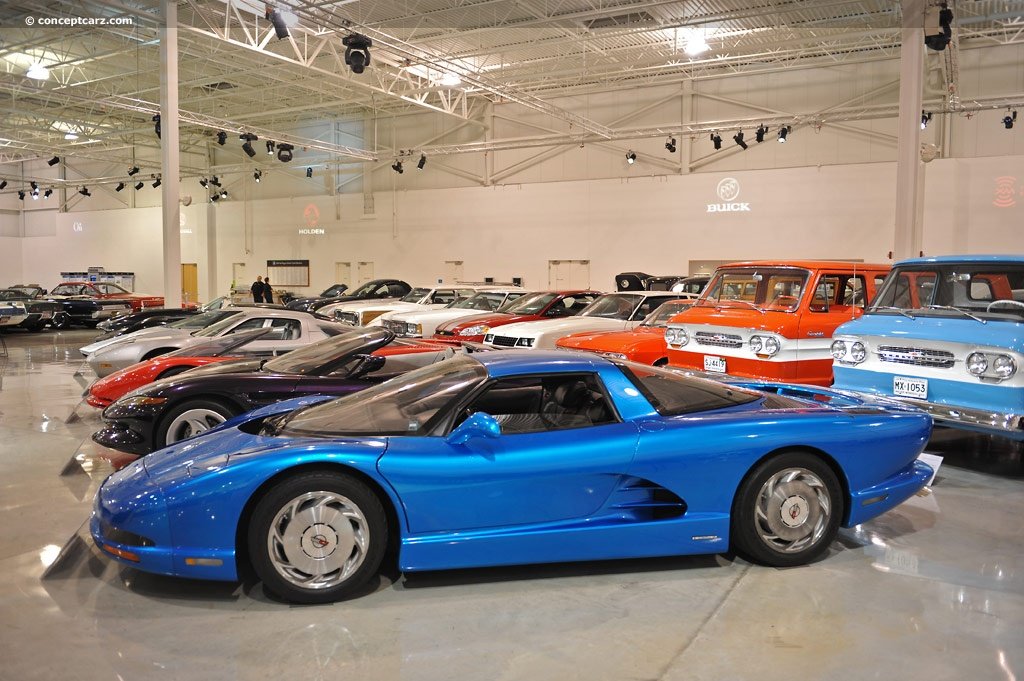E-Ray Isn’t the First All-Wheel Drive Corvette
It’s hard to look at the new E-Ray, all-wheel drive Corvette, and not remember the last time that Chevrolet toyed with the idea of an all-weather, mid-engined Vette. It’s also interesting to see how close this new car is to a concept that, at the time, was considered just too crazy to build.
2024 Chevrolet Corvette E-Ray
It’s hard to look at the new E-Ray, all-wheel drive Corvette, and not remember the last time that Chevrolet toyed with the idea of an all-weather, mid-engined Vette. It’s also interesting to see how close this new car is to a concept that, at the time, was considered just too crazy to build.
In 1990, Chevrolet was looking for a way to compete with some of the ultra exotic sports cars of the day. Notably, they had eyes on the Porsche 959 which combined looks very much like the legendary 911 but was packing a turbo engine and all-wheel drive.
Chevrolet had been flirting with the idea of a mid-engined Corvette since the days of chief engineer Zora Arkus-Duntov who advocated for a mid-engined Vette all the way back in the late 1950’s.
Copyright Jim Culp
Put this all together and you get the Chevrolet Engineering Research Vehicle (CERV) III. This was the 3rd in a series that dated back to 1960 (CERV I) and 1964 (CERV II). Similar to the 959, the CERV III packed a turbo engine (a 32-valve 5.7L V-8 in this case) putting out 650hp mounted behind the cabin. Additionally, the car put power to the pavement via a 6-speed automatic transmission (made up of a pair of 3-speed Hydra-Matic) that sent power to all 4 wheels.
During the same time, Chevrolet was working on what would become the C5 Corvette. If you squint at the CERV III, you can see the same greenhouse that the production Vette brought to the party. At that time, as well as from then until the mid-engined C8, Chevrolet has been trying to make the business case work for a move to this engine position. This puts the heavy engine over the drive tires, for enhanced traction. Mid-engined also provides for more agile handling since the bulk of the mass is near the center of rotation.
Copyright bluto2000
C5 was, at the time, just the latest in a series of times when the traditional front-engine/read-drive powertrain just made the most financial sense. In the case of the CERV III, it lost out since production of the car would have resulted in what was expected to be a $300000 car, vs the C5’s ultimate $37500 starting price ($681247 and $85155 in today’s dollars).
But, let’s take a look at what Chevy has been able to pull off in the 2024 E-Ray by comparing it against the CERV III:
| CERV III | Corvette E-Ray | |
|---|---|---|
| Engine | Twin Turbo 5.7L 32-valve V-8 | 6.2L 16-Valve V-8 (Rear) and Electric motor (Front) |
| Transmission | 6-speed Hydra-Matic automatic | 8-speed dual-clutch automatic |
| Horsepower | 650 | 655 (total) |
| Torque | 655 lb*ft | 595 lb*ft (total) |
| 0-60mph | 3.9 sec | 2.5 sec |
| Top Speed | 225 mph | Unknown (should be close to base C8's 194 mph) |
| Curb Weight | 3400 lbs | 3774 lbs |
| Price | $300000 ($681247 in 2023 dollars) | $104295 |
So, what we see here is that in the course of 34 years, Chevrolet has been able to match or exceed the performance of the CERV III (except top speed where the electric front motor will not be able to be much help). All of this for less than 1/6th the price.
$104k is certainly nothing to sneeze at…but it is pretty clear that GM waited the right amount of time to finally bring a mid-engined and all-wheel drive car to market. The Corvette’s reputation as a bargain exotic certainly also seems to be intact as well.



